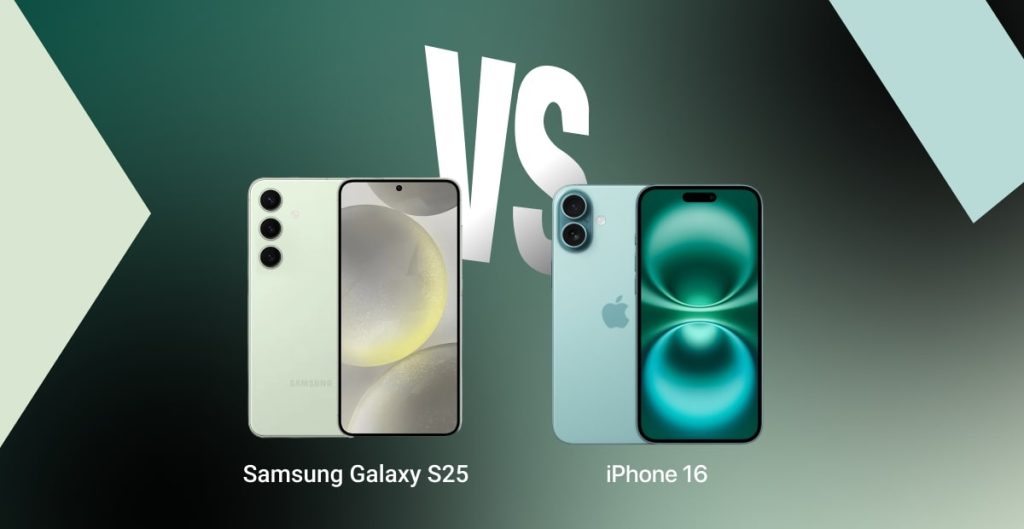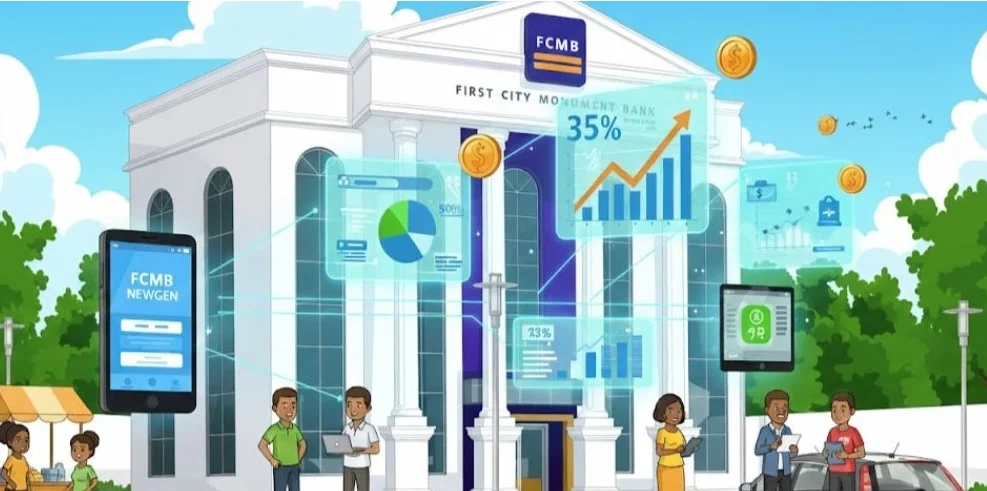The iPhone 16 and Samsung Galaxy S25 represent the pinnacle of innovation in their respective ecosystems, both designed to deliver premium experiences for users seeking top-tier performance, camera capabilities, and cutting-edge features. The rivalry between Apple and Samsung in the smartphone industry has long been a point of interest for consumers, and both the iPhone 16 and Galaxy S25 aim to build upon their predecessors’ successes. Below is a detailed comparison of these two flagship smartphones across various important categories: design, display, performance, camera, battery, software, and more.
Design and Build Quality
iPhone 16:
Apple has consistently been praised for its minimalist and premium design, and the iPhone 16 continues this tradition. It features a sleek, flat-edged design that is made using high-quality materials like Ceramic Shield glass and aluminum. The Ceramic Shield, which Apple claims is tougher than any other smartphone glass, adds to the device’s overall durability. The iPhone 16 maintains a high degree of water and dust resistance with an IP68 rating, meaning it can withstand submersion in up to 6 meters of water for up to 30 minutes.
Apple has continued to refine its design philosophy, offering the iPhone 16 in various attractive color options, such as graphite, silver, gold, and a new deep purple. The phone’s build is solid, with a premium feel that fits comfortably in the hand, maintaining the brand’s commitment to aesthetic refinement and functional ergonomics.
Samsung Galaxy S25:
The Samsung Galaxy S25, in contrast, features a more dynamic and futuristic design. With a slim profile and rounded edges, the Galaxy S25 is lighter than the iPhone 16, thanks in part to its titanium frame, which is also a more durable material compared to the iPhone’s aluminum. The back of the device is made from toughened glass with a sleek matte finish, providing a smooth and luxurious feel. Samsung’s design language embraces curved edges, giving the Galaxy S25 a more futuristic and expansive feel when viewed from the sides.
In terms of durability, the Galaxy S25 also boasts an IP68 rating, making it resistant to dust and water. The phone is available in multiple colors, including Phantom Black, Phantom White, and a limited-edition color exclusive to certain regions.
Display: Visual Excellence
iPhone 16:
Apple’s Super Retina XDR OLED display is one of the standout features of the iPhone 16. The 6.1-inch screen offers a stunning resolution of 2556 x 1179 pixels, providing crisp and vibrant visuals. The display boasts true-to-life colors, deep blacks, and remarkable brightness levels, with a peak brightness of 1000 nits. This makes the screen easy to view under direct sunlight, ensuring excellent outdoor visibility.
One of the key features of the iPhone 16’s display is its high color accuracy, which makes it ideal for creative professionals, such as photographers and video editors, who require precise color reproduction. Apple also maintains its ProMotion technology, which allows for smoother animations, responsiveness, and a variable refresh rate that adjusts up to 120Hz based on the activity being displayed.
Samsung Galaxy S25:
Samsung is renowned for its AMOLED displays, and the Galaxy S25 pushes the boundaries with its 6.2-inch Dynamic AMOLED 2X display. It offers a resolution of 2340 x 1080 pixels, which may not be as sharp as the iPhone 16’s display but remains more than sufficient for most users. The real highlight of the Galaxy S25’s display is its ability to reach an incredible peak brightness of 2600 nits, which is significantly higher than the iPhone 16. This provides superior visibility in bright outdoor conditions and makes it a standout option for users who consume a lot of media outdoors.
Samsung’s display also features a 120Hz adaptive refresh rate, ensuring fluid and seamless transitions between content and animations. This is particularly noticeable when gaming or scrolling through apps, making the Galaxy S25 one of the best smartphones for media consumption and mobile gaming.
Performance: Powering the Experience
iPhone 16:
The iPhone 16 is powered by Apple’s A18 Bionic chip, one of the most powerful processors in the mobile industry. This chip is built on a 4nm process, allowing for even greater efficiency and faster speeds. It comes paired with 8GB of RAM, which, while less than some Android competitors, is more than sufficient for handling multiple tasks simultaneously. The iPhone 16’s seamless integration of hardware and software ensures that the device performs exceptionally well, whether you’re gaming, multitasking, or using demanding applications.
Apple’s proprietary Neural Engine, which is optimized for machine learning tasks, enables enhanced features like real-time video processing, advanced image recognition, and more. This ensures that the iPhone 16 delivers a responsive and efficient user experience, from app launch speeds to gaming performance.
Samsung Galaxy S25:
The Samsung Galaxy S25 runs on the Qualcomm Snapdragon 8 Elite processor, which provides comparable power and efficiency to Apple’s A18 Bionic chip. Paired with 12GB of RAM, the Galaxy S25 offers more memory than the iPhone 16, making it better equipped for multitasking and handling resource-intensive apps. The larger RAM size also helps maintain performance over time, ensuring the device continues to operate smoothly even after prolonged use.
Samsung’s processor offers improved AI and machine learning performance, allowing for better photo processing, real-time optimizations for games, and faster app load times. The Snapdragon 8 Elite chip also supports 5G connectivity, ensuring that the Galaxy S25 is future-proofed for fast mobile data speeds in areas with 5G coverage.
Camera: Imaging Powerhouses
iPhone 16:
Apple continues to lead the way with its advanced camera systems, and the iPhone 16’s triple-camera array is a testament to that. It consists of a 48MP wide-angle lens, a 12MP ultra-wide lens, and a 12MP telephoto lens, capable of 3x optical zoom. The iPhone 16’s cameras excel in real-world scenarios, producing sharp, vibrant images even in low-light conditions, thanks to its Night Mode and Deep Fusion technology.
Apple’s software-driven photography enhancements, like Smart HDR 5 and computational photography, allow the iPhone 16 to deliver incredible detail and color accuracy, especially in challenging lighting situations. The video capabilities are also impressive, with the ability to shoot 4K video at 60fps and enhanced stabilization for smooth footage, even in motion-heavy scenes.
Samsung Galaxy S25:
The Samsung Galaxy S25 also features a powerful triple-camera setup, including a 50MP primary sensor, a 12MP ultra-wide lens, and a 10MP telephoto lens with 3x optical zoom. Samsung’s camera system excels in providing high-resolution images with vivid colors and great contrast. Its Night Mode ensures that photos taken in low-light environments are bright and clear.
Samsung incorporates AI into its camera software, which allows for real-time scene optimization, facial recognition, and subject tracking, ensuring that every shot is automatically enhanced. Like the iPhone 16, the Galaxy S25 can shoot 4K video at 60fps and supports 8K video recording, setting it apart as one of the few smartphones capable of capturing video in such high resolution.
Battery Life: Endurance and Charging Speed
iPhone 16:
The iPhone 16 is equipped with a 3,561mAh battery, which supports up to 22 hours of video playback. This is a significant improvement in battery life compared to its predecessors. Additionally, Apple continues to support 20W fast charging, which allows the device to charge from 0 to 50% in just under 30 minutes. MagSafe wireless charging is also supported, allowing users to charge their iPhone 16 wirelessly with a magnetic charging dock.
Samsung Galaxy S25:
The Galaxy S25 is powered by a larger 4,000mAh battery, which provides up to 29 hours of video playback. Samsung has also improved charging speeds with support for 25W wired charging and 15W wireless charging. With its larger battery, the Galaxy S25 offers slightly better endurance than the iPhone 16, especially during heavy media consumption or gaming sessions.
Software and AI Features
iPhone 16:
The iPhone 16 runs iOS 18, which introduces several new features and improvements over its predecessors. Some of the most exciting updates include advanced writing tools, mail summaries, and Apple’s integration of visual intelligence, which uses AI to recognize and categorize objects within photos and videos. Additionally, iOS 18 brings ChatGPT integration for more natural, conversational AI interactions.
Samsung Galaxy S25:
The Galaxy S25 operates on Android 15 with One UI 7, offering a more customizable interface than iOS. Samsung has incorporated its own suite of AI features, including Galaxy AI for tasks like automatic scene adjustments and real-time object recognition in photos. One UI 7 also includes several enhancements to improve multitasking and increase the usability of the large screen.
Pricing and Value
Both the iPhone 16 and Galaxy S25 start at $799 for the base models with 128GB of storage. While this price point is similar, the iPhone 16 may feel like a better value for users already invested in the Apple ecosystem, while the Galaxy S25 offers more flexibility with RAM and display size, appealing to Android users.
Conclusion
The iPhone 16 and Samsung Galaxy S25 are both flagship smartphones, each offering a premium experience for users. The iPhone 16 shines with its seamless integration into the Apple ecosystem, superb camera capabilities, and efficient performance. On the other hand, the Galaxy S25 offers a more robust display with higher peak brightness, more RAM for multitasking, and cutting-edge AI features.
The choice between these two smartphones largely depends on individual preferences, such as operating system, design, camera needs, and performance expectations. Both devices are top-tier options, with the iPhone 16 appealing more to Apple fans and the Galaxy S25 providing exceptional flexibility and innovation for Android users.












